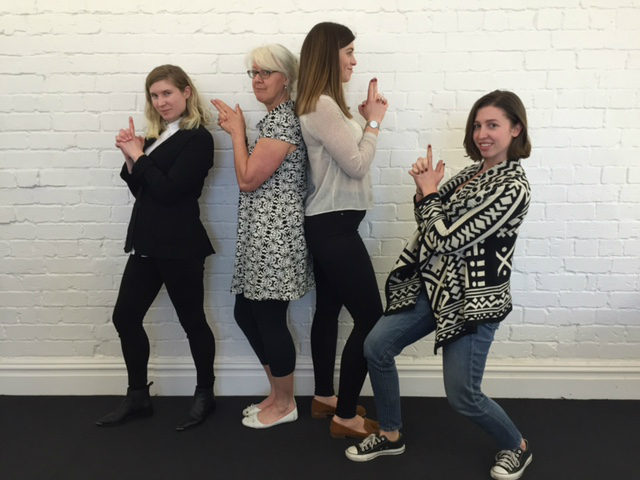In the modern office, the rights of the individual to personal expression are increasingly trumping company identity. But is a relaxed office dress code really the key to a happier and more productive workplace?
Candace Bushnell, the author of Sex and the City, pens her novels while wearing silk pyjamas in her living room. In Silicon Valley, Steve Jobs’ now iconic daily uniform of a black turtleneck paved the way for the millennial tech CEOs of today, whose sneaker-and-hoodie office dress code screams success rather than slacker.
For most of us, our work attire sits somewhere on the jeans-and-blazer spectrum. But it’s likely that we’ve all – at some point – harboured fantasies of rolling straight out of bed and into the office, resplendent in a baggy grey t-shirt and drawstring pants.
Today, as more modern workplaces embrace individual self-expression, from religious dress to tattoos, I wonder: Are we witnessing the end of the office dress code?
At PricewaterhouseCoopers, a decision made earlier this year certainly nudges the societal weather vane closer towards this outcome. In June, the top-end firm abandoned its ‘modern professional’ dress code, replacing it with … nothing.
That’s right. In place of a new set of guidelines, the company now simply leaves it to employees to use their best judgement and wear what works best for them, while also being respectful and appropriately attired to meet clients and colleagues.
This contrasts noticeably with an incident at the same company’s office in the UK, where Nicola Thorp, a temp receptionist, was sent home after refusing to wear heels. It drew a lot of negative publicity for PwC and prompted widespread discussion about the purview of employers in enforcing gender specific or objectively oppressive dress codes on their workers.
Sue Horlin, PwC’s new human capital leader in Australia, explained to Business Insider that they believe their change in policy will give them an edge in the war for talent, stating “we want the same creative, innovative and diverse people that all the other companies are chasing.”
For HR professionals like Horlin, it’s a topic that treads a fine line between hot-button issues of gender equality in the workplace, and policies that ensure a company presents a unified and professional front to the world
“There has been a dramatic change very recently,” says Susan Scafidi, a law professor at Fordham University. “We are moving into an era where personal expression is going to trump the desire to create a corporate identity.”
But does a more casual approach to work dress, championed at places like Google, actually lead to more productive workplace environments?
A 2015 study at California State University found the opposite is true. Wearing more formal clothes “encourages people to use abstract processing more readily than concrete processing,” according to their findings. In layman’s terms, there is evidence to suggest that dressing professionally helps us behave more professionally too.
So what are your thoughts? Has your workplace considered an office dress code policy change? And if so, how has it effected your office?
To put things in perspective, here’s what the HRMonline team wore to work today:
As you can see, we’re a pretty casual crowd.



I am all for free expression/freedom and no judgment based on dress, however, I also understand that business has standards and has paid dearly for these standards. Perhaps when all the baby boomers leave the workforce these standards will go? Until then, long live the dress code standards!! Written or not!!
I have an interesting situation – I work in a ‘Corporate Office’ environment for one of the major automotive manufacturers where the dress code is slightly flexible – i.e. business attire (Shirt/Slacks) are common and Smart Casual (Jeans are permitted with a collared shirt) are the more ‘casual options’. However, As a result of a back related injuries, my medical professionals suggested I have the option to stand and walk at work – thus I have a ‘dynamic’ desk that incorporates a treadmill and allows me to stand and walk. Because I heat up whilst walking, I actually wear gym… Read more »
In my experience, in organisations without a written dress code, employees are still judged by what they wear – even if that judgement is never overtly stated. And in those situations HR are usually called upon to have “a quiet word” with the person; who of course argues that they do not understand why the way they dress is a problem (who can forget exposed underwear and midriffs in the noughties?). I would argue it is actually fairer to clearly articulate what your standards are, so everyone knows what is expected. There are always some people who do not pick… Read more »
I am currently reviewing our Employee Handbook and when I came to the Dress Code section I was tempted to just delete it! Our office is very casual, quite similar to the photo above, plus the majority of our staff work in child care centres or run playgroups – so, they are very casual
After reading this article, I’ve instead decided to re-write it, and rather than listing what can be worn, mainly it will be guidelines on what is not acceptable/suitable